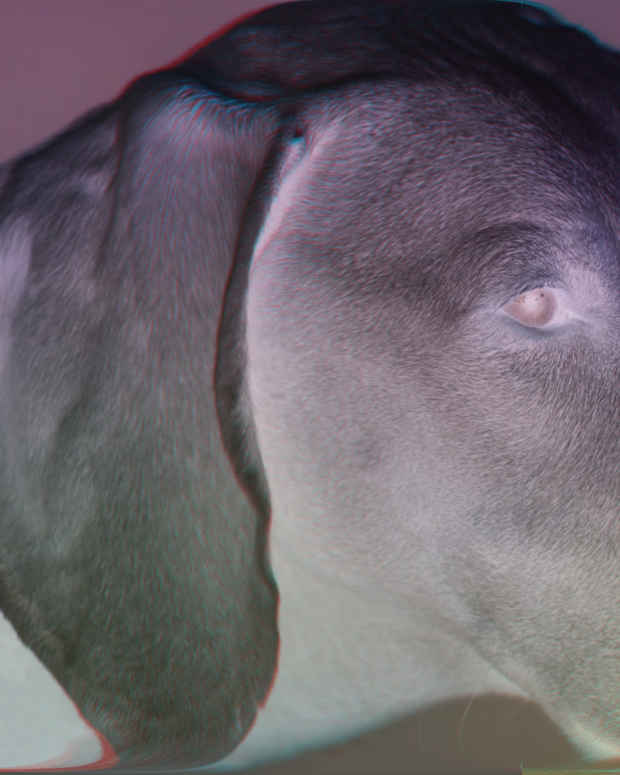Sharyar Nashat “Hounds of Love”
Gladstone Gallery (Chelsea 24th Street)

This event has ended.
An image that is not just an image, but closer to a thing that it is also not – flesh – is visible somewhere in every room. Like the red eye of a camera, it follows your movements and tracks your status in relation to an open wound. It shares its title, Boyfriend.JPEG, with all the others works in the exhibition because they too describe something that they are not: not a boyfriend but a jpeg; not a presence but its format, that is to say, its absence. Are you following? This is obviously about love.
Shahryar Nashat has specialised in conjuring the particular kind of presence that is absence pushed past its limit. The truant body that we find in his work is potent enough to function as an eloquent descriptor of what is not there. A foam mattress and sheer plastic bags of urine make a symphony of yellow and a consideration of skin, containment, intimacy, rest, and waste. Coloured spines with uneven surfaces are suspended from the ceiling, carriers of nothing and so shiny they should be liquid, just as the bruised skin of a slab of marble is so finely draped it should respond to your touch. Large shell-like shapes of fibreglass manifest a kind of lapsed materiality, or negative space, miscarried from the virtual. Each in their way, all of Nashat’s sculptures sit breathlessly on the border between soft and hard, thing and being, deliberation and detritus, like a sound turned up high enough that it achieves a different texture. These are things that might be, and already were. You hear the echo of a blast that happened elsewhere—not so faint at all.
“Please, nothing happens” a voice repeats in the video, as we follow the shell of an armed figure controlled by someone who is not here. “Yes, I’ve been crying,” the voice admits to the sound of a damaged, fragmentary score, words and music both somehow ominous in their partiality. These utterances are measures of the distance between an avatar and a person, or a jpeg and a boyfriend, suggestions of potential as well as impotence. It is with such lines that we leave ourselves defenceless in the face of love. Still, they are not just expressions of Ohnmacht (what the Germans have named the particular lack of agency inherent to romance) but the stirring of a powerful emotion that can make all kinds of things materialise. We hear in them the sound of two parts detaching, the moment when love is the most physical, the most raw and tangible that it will ever be. It is in this moment that the hounds come out; when the crash is not a test and the heart not a metaphor.
I’ve come to think of this as an anti-vanitas logic. As opposed to the blooming flowers and dewy lobsters on old Dutch paintings, not an emphasis on the peak of life as foreboding of its demise, but sober manifestations of what remains: the moulds detached, the skins shed; things become useless, become art. To come back to the open wound, the flip side to its exposure is an invitation to care, just as vacancy is a space carved out for inhabitation. We could say there’s something desolate about these objects, something empty about the scene. But it is precisely amidst the material reality of goneness, in this celebration of aftermath, that we meet, finally, paradoxically, love—aborted into the world, an unshapely thing.
– Kristian Vistrup Madsen
Media
Schedule
from March 17, 2022 to April 23, 2022